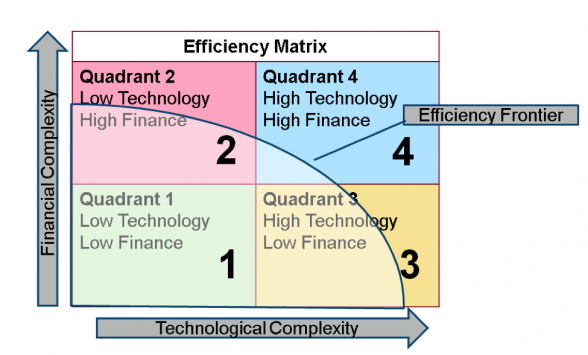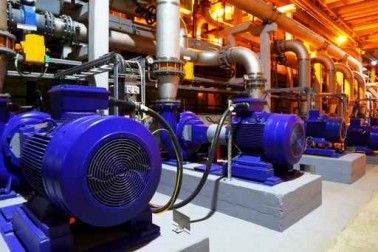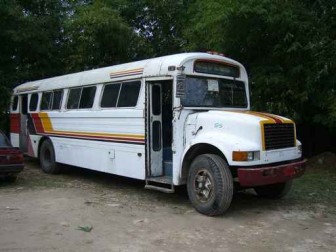Making a Big Impact in a Big Hurry: Finance and Technology in Sustainable Cities

Who will you meet?
Cities are innovating, companies are pivoting, and start-ups are growing. Like you, every urban practitioner has a remarkable story of insight and challenge from the past year.
Meet these peers and discuss the future of cities in the new Meeting of the Minds Executive Cohort Program. Replace boring virtual summits with facilitated, online, small-group discussions where you can make real connections with extraordinary, like-minded people.
In our lifetimes, the number of people living in cities will more than double – growing to over six billion, according to UN projections. The world already faces shortages of water, electricity, clean air, land and food; too much garbage, too much dirty air, and too much time wasted in transit. Rapid urbanization will only make this situation worse. What is to be done?
Many people hope that “better government” will address these problems – where politicians wake up and suddenly applying long term thinking based on evidence and logic to make fully funded investments that benefit all of society. I’m a skeptic – I don’t think governments will be able to do this. All over the world, governments are stuck politically (like the US and India) or they are out of money for public investment (like China and Indonesia).
This means that private companies and investors have both an obligation – and an opportunity – to do something big. I’m interested in how firms and bankers use sophisticated financial tools – coupled with connected technologies – to build businesses that make money and which make a difference in sustainable cities.
Here’s how.
Water, power, transit
Companies in North America, South America, Europe, Asia, South Asia, Saudi Arabia, and Indonesia have contributed to my research and consulting for the Harvard Business School MBA elective, “Sustainable Cities: Urbanization, Infrastructure, and Finance” (selected publications list here). Rapid growth in emerging economies means that right now, today, they are putting down the roads, bridges, water systems, power grids, and buildings that will determine their use of carbon, water, and commuting time (and fuel) for decades. There is tremendous impact in investing in sustainability in the built environment – and in connected technologies – particularly in emerging markets.
Interventions in water, electricity, and transit have the most investment leverage, for several reasons. First, they involve tangible assets which can be built and financed at large scale. Second, if families and businesses have water, electricity, and a way to get to work and to move goods, they can build on that foundation. Without water, electricity, and transit, none of the other smart urbanization interventions are possible. And finally, since these are physical goods, their use can be optimized and coordinated at very large scale.
How should we think about this?
Supply and Demand
Many technologists are interested in “more supply.” Among the non-petroleum examples are photovoltaics, concentrating thermal solar, wind power, algae, waves, biomass, and nuclear power. But these are expensive and hard to scale. Three billion people won’t get better lives through wave power and crowdsourced traffic apps.
“Less demand” is the solution that can scale up. There is a behavioral aspect of ‘less demand:’ “live in a smaller house, don’t drive, set your thermostat to ‘uncomfortable’ winter and summer.” A difficulty is that “use less” concepts are hard to impose – since they largely seem to involve preaching and take-aways.
Efficiency
Investments in resource efficiency are what effectively stretch the resources we have by making water, electricity, and transit time go farther. We can reduce overall demand for finite resources by being more efficient, and avoid the preaching and take-away obstacle. The “efficiency matrix” illustrates how.

Source: Adapted from Macomber, Building Sustainable Cities,” Harvard Business Review, July/August 2013. Narrated Infographic here: Understanding the Efficiency Opportunity
Quadrant 1 represents business as usual.
In Quadrant 2, Sophisticated financial engineering has many benefits in the cities and infrastructure space. A classic example is a public-private partnership for a toll road like Poland’s A2 Motorway (HBS case study here) where efficient roads get financed and built by the private sector, not using public funds. Firms like Golder Associates and HOK facilitate similar projects. This is a good step but still does not lead to coordination and optimization of resources.
Quadrant 3, moving to the right in terms of technological complexity, is where machines and devices and configurations get better. In this quadrant, basic efficiency is well understood by readers of the CityMinded blog. Companies like Schneider-Electric, Bombardier, Toyota, and Itron all make good machines and gadgets. Organizations like the Rocky Mountain Institute have been talking about negawatts for decades. This is all fine but it is all based on 1:1 decisions. For example, one homeowner buys a better air conditioner (if they can afford it) from one vendor. It’s a one to one transaction vendor/consumer, with no optimization or coordination involved. Technology leads to more efficiency. This also is helpful, but it’s often limited in adoption to those with knowledge and/or those with money.
For the most part, these are all single firm, single user, single solution approaches. They pluck some low hanging fruit and should be continued. But they don’t take advantage of the blend of finance and technology that helps multiple firms and consumers, working together, accomplish far more than they could on their own – particularly with respect to energy, water, and transit efficiency.
Multiplier Firms
Quadrant 4 is the real frontier in coordinating and optimizing between several companies and many users in ways that none of them can do on their own. This is the fourth quadrant in the efficiency matrix; the place where business can get big and where a real difference can be made. I call the promoters of these solutions “multiplier firms” since they multiply the benefits by engaging many parties, and they multiply the benefits by figuring out and sharing the path. Here are three examples.
Water
The city of Algiers (see photo, top) was struggling to provide water to its growing urban population. Multiple treatment and desalination facilities were redundant or absent. In general they struggling for maintenance and money to stay in operation, and the city was not in a position to pay out of pocket or to raise debt to rebuild and expand the water facility.
Working in conjunction with GE and other vendors, a public private partnership was created. A special purpose entity (here) financed both new equipment and better coordination of existing water infrastructure. The repayment source was city tax and water receipts annualized over a long period. This financial structure opened up additional borrowing capacity.
In this solution, there is more water available AND less water wasted AND more efficient public finance. By using multi-layered financing to bring optimized and efficient generation, distribution, and monitoring to Algiers Water in a way that none of the players could do on their own, this project is a good illustration of crossing the efficiency frontier.
Electricity
Electricity cannot be easily stored. Electricity demand peaks on hot summer days when there is a lot of call for air conditioning in homes, offices, factories, airports, and hospitals. In most jurisdictions a) the local utility is bound to supply all of the power called for and b) none of the users have any idea what other users are doing. But most of the time the “peaker plants” lie idle (wasting capital) – and at a peak, nobody is incented to use a little less. Firms like Schneider-Electric and EnerNOC are in the Demand Response business. They pay users a monthly fee year round so that they can then direct users during a “peak event” to schedule that big mainframe data crunching computer run to tomorrow, or to make that big batch of ice cream on Saturday, or to turn up the office a/c from 72 to 76 for a couple of hours.

Electricity production.
None of the users could have optimized this system on their own – but a multiplier firm like EnerNOC multiplied the benefit in coordination and means that 1) less electricity is used 2) what is used, is generated off peak often at cheaper fuel costs and, most importantly, 3) less physical plant needs to be built by the utility. The utility saves money which can be reflected in a) reduced rates and b) the stream of payment to EnerNOC consumers.
This is a level of optimization that none of the parties could have done on their own and could not have accomplished without connected technology. EnerNOC is in Quadrant 4 of the Efficiency Matrix. Financially, EnerNOC is a listed company and when the solution is perfected they should be able to scale up this benefit in many venues.
Transit
A decade ago, Mexico City was choked by hundreds of informal buses, all owned and operated in an informal way by hundreds of driver/owners (largely in old American school buses belching diesel fumes), with chaos in the fares, chaos in the routes, and limited opportunity for driver/operators. Neither the city government, the drivers, nor the riders could unstick this situation.

Photographed near Chichen Itza, Mexico.
EMBARQ, an NGO focusing on transit solutions, had the vision, persuasive skills, and access to seed capital to implement a new solution called Metrobus: retiring the old buses, helping the city to finance and purchase new efficient buses, normalizing routes and fares, using connected technology to optimize ridership, and creating a beneficial employment collaboration for the drivers. This saves money, time, and pollution and creates a more competitive city and better jobs. This kind of financial and technological multiplier is how to make a difference in Quadrant 4.
The Challenge of our Time
Hundreds of millions of people are moving to cities. There is already not enough clean air, clean water, land, food, place to put the garbage and there is too much traffic and air pollution. Urbanization will only make this worse. Governments are stuck.
How should technologists, investors, companies, and governments respond?
- Focus on the demand side, not the supply side.
- Invest in Quadrant 4 efficiency and optimization solutions, often via multiplier firms.
- Focus on water, electricity, and mass transit.
- Marry sophisticated finance and sophisticated technology to get to the funding and implementation of solutions that people and companies and municipalities can’t quite get to on their own.
- Pay attention to finance that builds things and to technologies that address the physical world. Don’t get distracted by financial trading strategies on computers and elite technologies that are trying to make it out of the lab.
As framed by Nitin Nohria, dean of Harvard Business School: The problems of the world won’t be solved by business alone, of course; but none of the world’s problems will be solved without the involvement of business.
Discussion
Leave your comment below, or reply to others.
Please note that this comment section is for thoughtful, on-topic discussions. Admin approval is required for all comments. Your comment may be edited if it contains grammatical errors. Low effort, self-promotional, or impolite comments will be deleted.
Read more from MeetingoftheMinds.org
Spotlighting innovations in urban sustainability and connected technology
Middle-Mile Networks: The Middleman of Internet Connectivity
The development of public, open-access middle mile infrastructure can expand internet networks closer to unserved and underserved communities while offering equal opportunity for ISPs to link cost effectively to last mile infrastructure. This strategy would connect more Americans to high-speed internet while also driving down prices by increasing competition among local ISPs.
In addition to potentially helping narrow the digital divide, middle mile infrastructure would also provide backup options for networks if one connection pathway fails, and it would help support regional economic development by connecting businesses.
Wildfire Risk Reduction: Connecting the Dots
One of the most visceral manifestations of the combined problems of urbanization and climate change are the enormous wildfires that engulf areas of the American West. Fire behavior itself is now changing. Over 120 years of well-intentioned fire suppression have created huge reserves of fuel which, when combined with warmer temperatures and drought-dried landscapes, create unstoppable fires that spread with extreme speed, jump fire-breaks, level entire towns, take lives and destroy hundreds of thousands of acres, even in landscapes that are conditioned to employ fire as part of their reproductive cycle.
ARISE-US recently held a very successful symposium, “Wildfire Risk Reduction – Connecting the Dots” for wildfire stakeholders – insurers, US Forest Service, engineers, fire awareness NGOs and others – to discuss the issues and their possible solutions. This article sets out some of the major points to emerge.
Innovating Our Way Out of Crisis
Whether deep freezes in Texas, wildfires in California, hurricanes along the Gulf Coast, or any other calamity, our innovations today will build the reliable, resilient, equitable, and prosperous grid tomorrow. Innovation, in short, combines the dream of what’s possible with the pragmatism of what’s practical. That’s the big-idea, hard-reality approach that helped transform Texas into the world’s energy powerhouse — from oil and gas to zero-emissions wind, sun, and, soon, geothermal.
It’s time to make the production and consumption of energy faster, smarter, cleaner, more resilient, and more efficient. Business leaders, political leaders, the energy sector, and savvy citizens have the power to put investment and practices in place that support a robust energy innovation ecosystem. So, saddle up.






0 Comments